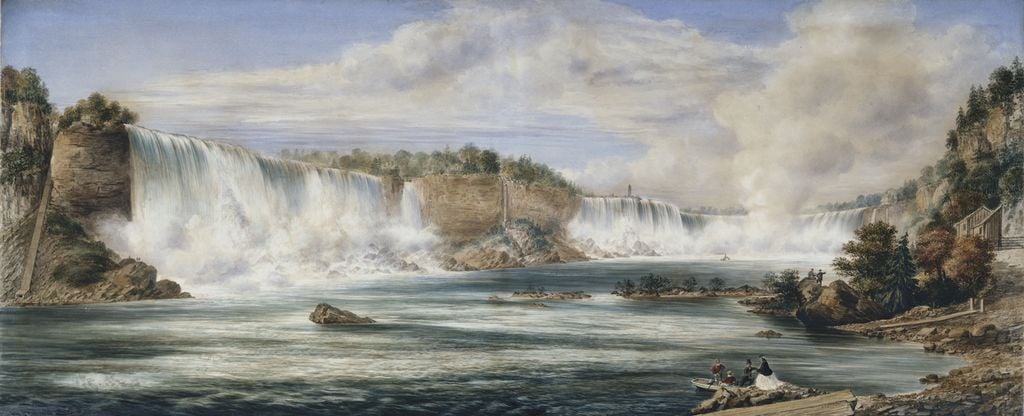
Canada
Explore The Royal Family's close relationship with the region, as well as the diverse artistic traditions represented in the Royal Collection
'Canada Made Us' - Royal Visits
Many members of the Royal Family have spent time in Canada, on official tours or serving as representatives of the Crown.
George III’s sons were the very first members of the Royal Family to visit British North America. These early visits were prompted by naval and military service. Prince William (later King William IV) visited Newfoundland in his capacity as captain of HMS Pegasus in 1786. The following decade, his younger brother, Prince Edward (later Duke of Kent and the father of Queen Victoria), lived in Halifax and Quebec City prior to becoming Commander of the British Forces in North America. Prince Edward Island was re-named in his honour in 1799. Prince Edward’s correspondence while in Canada has been digitised as part of the Georgian Papers Programme (GPP) and can be viewed online here.
Extensive royal tours did not take place until the later nineteenth century. By this time, Canada was well on the path to Confederation and a visit by the monarch’s representative was an important acknowledgement of the colony’s growth and importance to the Empire. In 1860, Queen Victoria’s 18-year-old son, Prince Albert Edward, undertook a two-month tour of Canada – the first Prince of Wales to do so. One purpose of the visit was to acknowledge Canadians’ involvement in the Crimean War (1853–56).
Strengthening imperial bonds and recognising military service remained an important theme in the twentieth century. When the Duke and Duchess of Cornwall and York (later King George V and Queen Mary) visited in 1901 as part of an eight-month empire tour, they expressed the monarch’s gratitude for Commonwealth efforts in the Boer War (1899–1902).
Members of the Royal Family have also served in official capacities in Canada. Queen Victoria’s daughter Princess Louise became the first British royal woman to cross the Atlantic when she travelled to Canada in 1878. The princess was vice-regal consort to John Campbell, Marquess of Lorne, who served as Governor General until 1883. Another of Queen Victoria’s children, Prince Arthur, Duke of Connaught, was Governor General from 1911 to 1916
In 1939, King George VI became the first reigning sovereign of Canada to set foot on Canadian soil. His landmark visit, with his consort, Queen Elizabeth, was a momentous acknowledgement of Canada’s place in the Commonwealth. The tour came at a critical moment – on the eve of the Second World War and not long after the new king’s Coronation in 1937. ‘Canada made us’, the queen later observed. The visit also followed the 1931 Statute of Westminster, which made Canada a politically independent dominion with a distinct Canadian Crown. Overall, the tour was a resounding success, drawing large crowds at every stop.
Her Majesty The Queen has made 20 official tours of Canada. Her first visit, as Princess Elizabeth in 1951, was made on behalf of her father. On each occasion since, she has visited as Queen of Canada, emphasising that she is ‘at home’ with her subjects. In 1957 The Queen opened the 23rd Canadian Parliament and in 1959 she visited every province and territory in the country. Subsequent tours have marked anniversaries of Confederation or sporting events such as the 1976 Montreal Olympics – at which Princess Anne competed on the British equestrian team.
Over the centuries, the scope of royal visits has increased thanks to improvements in transport – from the canals and railways of the nineteenth century, to the aeroplanes and helicopters of the twentieth. Members of the Royal Family have been able to travel further west and north over time. Each tour has also sought to reflect Canada’s growth and increasing confederation, incorporating the diverse communities it represents.
Participation in local festivities and customs – from lacrosse and timber slides to meetings with Indigenous communities – has remained central to royal tours. In addition, members of the Royal Family play an active part in Canadian public life, distributing honours, attending official receptions and supporting charitable work.







